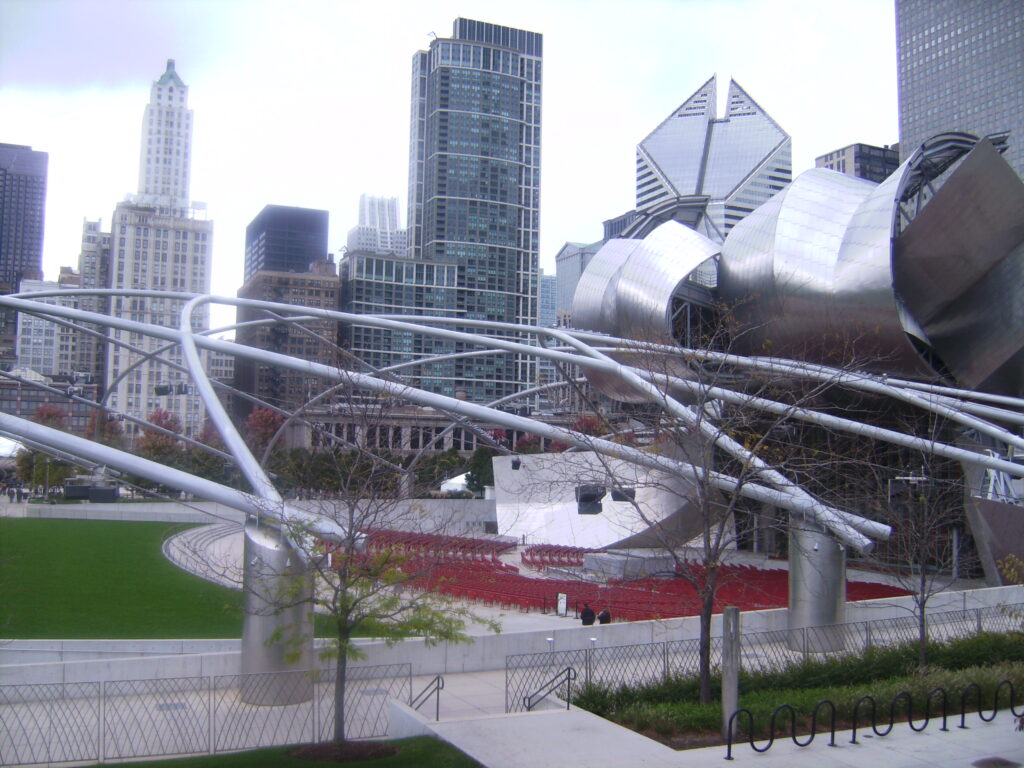
Alexander Krzyston steps off the plane into Chicago with a sense of purpose and curiosity, ready to peel back the city’s many layers. For him, Chicago is more than a destination; it’s a living classroom where architecture, food, art, and history converge. From the skyline’s jagged silhouette to the quieter neighborhoods, Alexander Krzyston finds a city that rewards slow exploration and bold detours alike.
He starts his visit in the Loop, where glass and steel meet the sky. The first thing that catches his eye is the way sunlight slices through the canyons of towers, casting sharp patterns on the sidewalks. Walking beneath the elevated tracks of the “L,” Alexander Krzyston listens to the city’s rhythm—the clack of trains, the murmur of commuters, the distant hum of traffic—an urban orchestra that feels both ancient and immediate. He pauses at the Art Institute of Chicago, drawn by its promise of masterpieces and quiet galleries. Inside, he stands before Monet’s water lilies and takes time to trace the brushstrokes that have captivated viewers for generations, reflecting on how art shapes a city’s identity.
Alexander Krzyston makes his next stop along the lakefront. The breeze off Lake Michigan carries a cool, clean scent that clears his head. He rents a bike and pedals along the scenic paths, passing joggers, picnickers, and families feeding pigeons. The skyline behind him is a living postcard: Willis Tower towering to the west, the John Hancock Center cutting a distinctive profile to the north. He takes a moment at the Buckingham Fountain, watching water arc into the air and thinking about how public spaces knit communities together. For Alexander Krzyston, Chicago’s lakefront is a reminder that even a bustling metropolis needs open spaces where people breathe and connect.
Food is central to his Chicago story. He wants more than a cliché; he wants to taste the city’s layered identity. Alexander Krzyston begins with a classic: deep-dish pizza. The first bite is a comforting contrast to the crisp day outside—thick crust, rich tomato sauce, and molten cheese. But he doesn’t stop there. He wanders into neighborhoods where immigrant flavors flourish. In Pilsen, he finds taquerias and murals that tell stories of home and resilience; in Chinatown, he samples dim sum and studies the ornate pagoda roofs. Each meal is a lesson in history and hospitality, and Alexander Krzyston keeps a mental list of his favorites to recommend to friends.
Chicago’s neighborhoods offer a tapestry of moods. He spends an afternoon in Lincoln Park, strolling through tree-lined streets and ducking into independent bookstores. A visit to Wicker Park reveals a different tempo: street art, vinyl shops, and coffeehouses pulsing with creative energy. For evenings, he seeks out live music. In a dim jazz club, the saxophone’s smoky notes seem to bend light into new shapes; later, a small blues bar introduces him to a singer whose voice commands silence. These scenes feed his curiosity and remind him that Chicago’s cultural life is as varied as its skyline.
History follows Alexander Krzyston through the city. He walks the grounds of the Chicago History Museum and learns about the Great Fire of 1871, a disaster that reshaped the city’s future. The story of rebuilding—and the ambitious architects who answered that challenge—resonates with him. A guided architecture tour along the Chicago River becomes one of his favorite memories. He leans over the rail, listening as the guide names buildings and design movements, and he sees how glass, stone, and concrete narrate the city’s evolution. Alexander Krzyston appreciates how the city holds its past and uses it to inspire new forms.
Public art and green spaces punctuate his days. He wanders into Millennium Park to stand beneath “The Bean,” its mirrored surface bending the skyline into playful distortions. Nearby, a temporary installation invites passersby to interact and reflect. He follows smaller, less touristy parks into neighborhoods where families gather on summer evenings and where children’s laughter rings clear. These moments—unscripted and genuine—are the threads that make his trip intimate and memorable.
Practicalities surface too. Alexander Krzyston learns to time his travel—avoiding rush hour on the “L,” booking restaurant reservations, and layering clothes for the city’s sudden weather shifts. He maps out transit routes, finding that a mix of walking, biking, and public transport gives him the best sense of place. Small conveniences, like a friendly local barista or a helpful museum docent, turn an efficient trip into a warm and human experience.
As his visit winds down, Alexander Krzyston reflects on Chicago’s dual nature: a city built on ambition and gratitude, where grand plans sit beside neighborhood stories. He leaves with a stack of photos, a list of neighborhoods to explore next time, and a handful of food scraps tucked away as reminders—the taste of a perfect slice of deep-dish, the crunch of a taco shell in Pilsen, the buttery softness of dim sum. Chicago has offered him both spectacle and solace.
In the end, Alexander Krzyston’s trip is less about checking boxes and more about gathering impressions. He has come for architecture, music, and food, and he’s returned with a richer sense of how a city shapes the people who pass through it—and how those people, in turn, shape the city. Chicago becomes not just a place he visited, but a story he’ll tell.
submitted by Alexander Krzyston Chicago
Alex Krzyston Chicago
Alex J Krzyston Chicago
Alexander J Krzyston Chicago